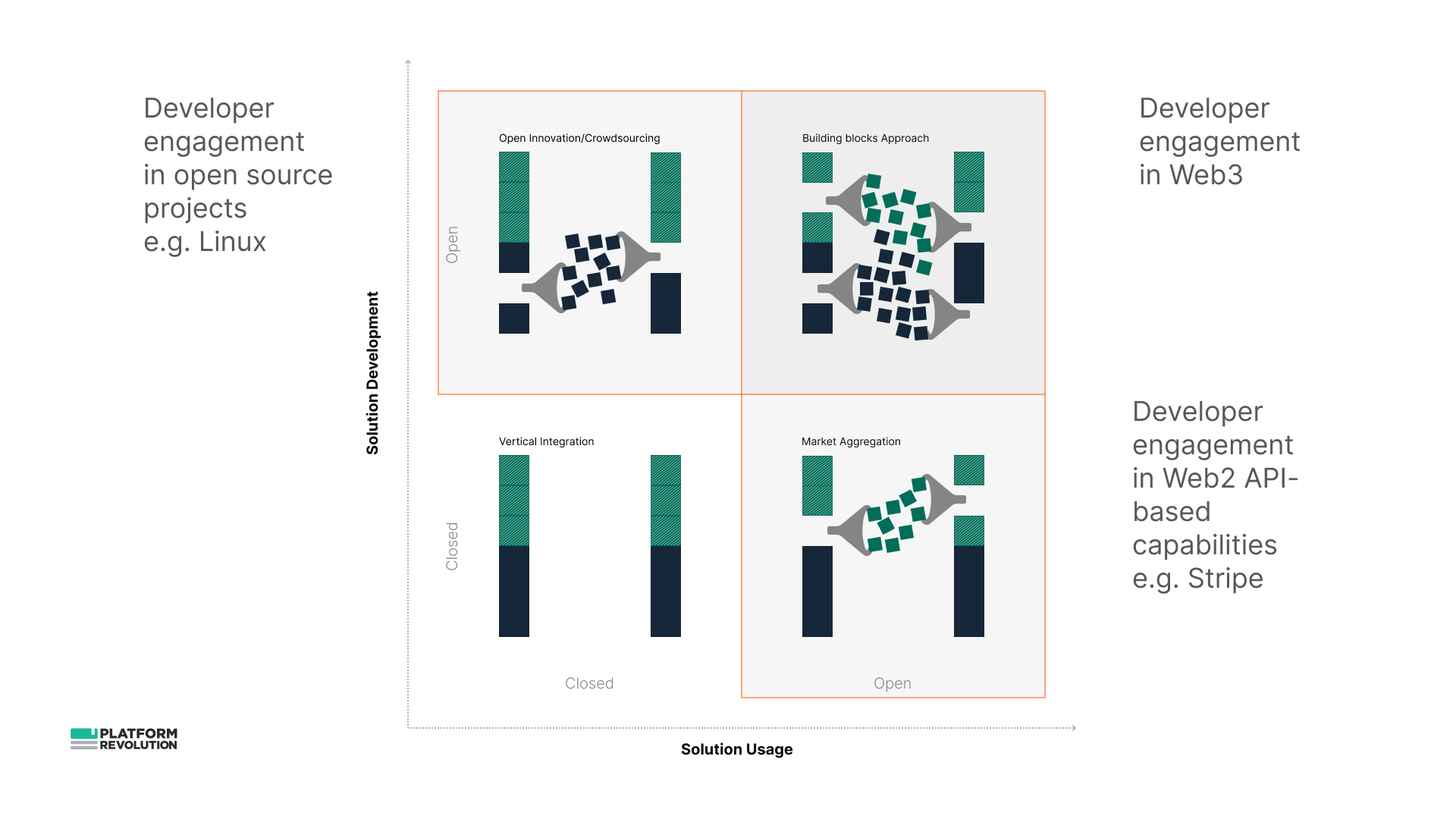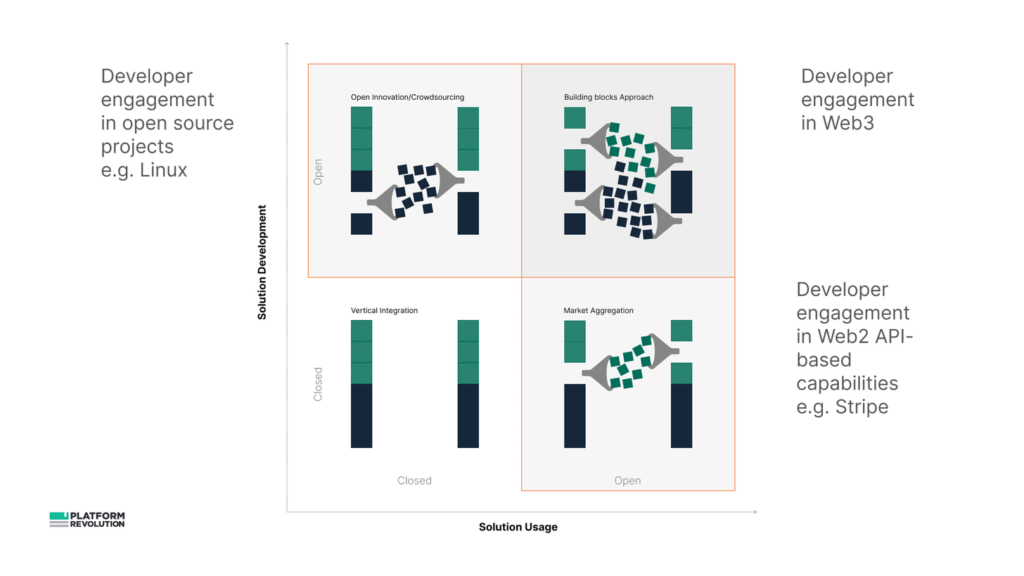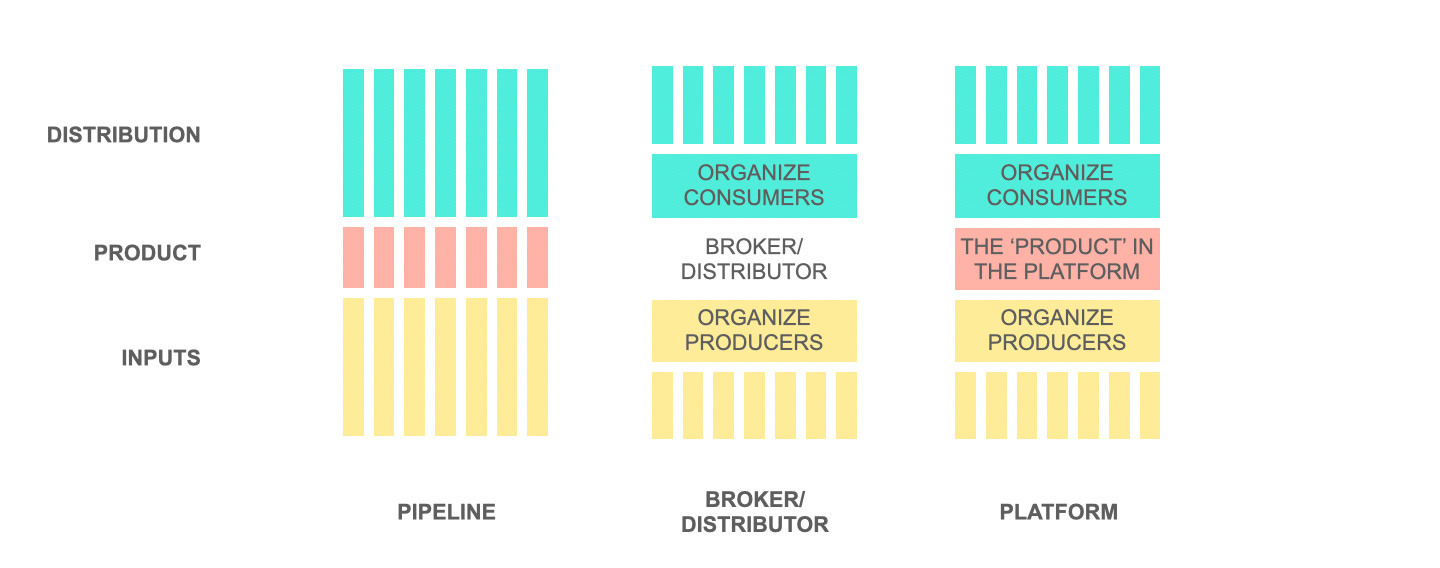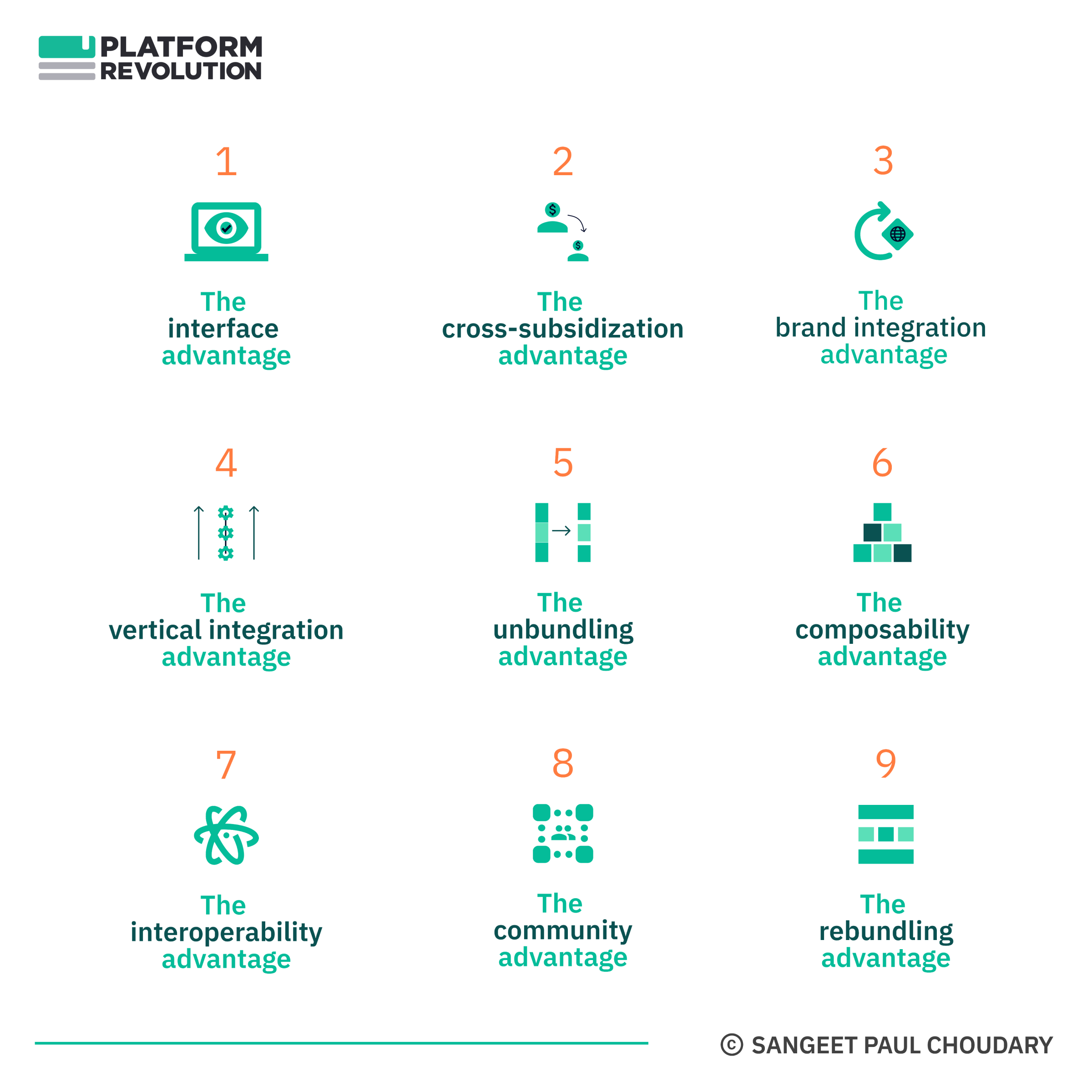Strategy
Web3 network effects: Designing for forkability
Exploring the interplay of composability and forkability in web3 strategy
Composability and forkability are two sides of the Web3 competitive strategy coin. On the face of it, they seem directly opposed.
On the other hand, forkability siphons value away from your protocol by enabling competition with minimal switching costs.
Traditional competitive strategy would recommend that projects embrace composability and design against forkability.
It’s tempting to jump to that conclusion.
Instead, I believe that Web3 platforms need to actively design for both composability and forkability in order to create enduring competitive advantage.
Designing for composability is obvious. Designing for forkability is counter-intuitive.
But that’s where this gets interesting!
Let’s dig in!
Rethinking competitive advantage
Web3 ecosystems are naturally geared towards high competition. Forking is easy and inevitable. A project that validates an opportunity creates an ever growing incentive for competition.
Forking, interoperability, and the possibility of vampire attacks create an entirely new competitive landscape in Web3.
Traditional scarcity revolved around asset control (e.g. oil fields) and distribution control (e.g. vertically integrating into a distribution network).
With Web2, what was traditionally scarce (distribution) became abundant, and scarcity shifted to data ownership and harvesting.
Web3 communities which disagree with the project’s roadmap can easily fork the project code and shift their liquidity to competing protocols. Vampire attacks enable the financial incentives to do this as well.
Instead, web3 competitive strategy must rely on embracing this lack of scarcity and assuming the inevitability of forking.
The user experience fallacy
In the early days of Web2, software creators who had not yet seen the power of network effects often argued that the best user experience would win. While user experience on traditional products is delivered largely through product design, user experience on platforms is dependent on network effects. Improvements in the user interface and workflow proved insufficient in competing with platforms with well established network effects.
All this seems fairly obvious in hindsight. Except that when strategizing against forking, many Web3 projects still believe that they can outcompete new competitors who fork their code base by delivering a superior user experience that better retains their users or adding features and functionality faster than competing forks.
These moves may work in a few instances but are unlikely to deliver a source of sustainable competitive advantage.
Instead, I believe that actively designing for forkability and embracing new forks back to the parent project will create sustainable competitive advantage for Web3 protocols.
Web3 competitive advantage: Designing for composability
Web2 banking-as-a-service (BAAS) platforms illustrate the value of integrations. BAAS platforms integrate with financial services APIs on the supply side and a wide range of fintechs and ecommerce APIs on the demand side. Replicating this requires significant investment. Integrations are built one by one and require investment and effort.
To insure against forking, ensure composability of your assets.
Integrations and partnerships also provide further insurance against forking. A protocol with a large number of integrations and partnerships in place can organize innovation across its partner ecosystem to rapidly co-innvoate new propositions and integrations across multiple protocols to compete with the fork. Unilateral innovation may not scale against an ever increasing number of forks but organising a larger ecosystem to co-innovate affords a more compelling response to new forks.
As an example, Boson Protocol engages in integrations across a diverse range of Web3 gaming worlds to drive greater innovation around the protocol and encourage adoption of the core protocol for transactions in these worlds.
Web3 provides a unique opportunity to strategize for composability not just at the level of protocols and ecosystems but also at the level of investment funds.
For a deep-dive on composability, get your own copy of the fully illustrated Building Blocks Thesis.
Download The Building Block Thesis
Web3 provides a unique opportunity to strategize for composability not just at the level of protocols and ecosystems but also at the level of investment funds.
Feel Free to Share
Download
Our Insights Pack!
- Get more insights into how companies apply platform strategies
- Get early access to implementation criteria
- Get the latest on macro trends and practical frameworks
Web3 competitive advantage: Designing for forkability
As I mentioned further up, designing for composability is obvious. Designing for forkability is counter-intuitive.
Designing for forkability turns future forks into collaboration opportunities, instead of viewing them as competitive threats. This isn’t achieved by merely embracing some fuzzy collective value / sharing economy ethos. To ensure that forking works in your favour, you need to strategically design for forkability.
The following are some considerations involved in designing for forkability.
Tools to design for forkability
Designing for forkability requires proactive planning to ensure that enough incentives are created for new forks to integrate back to the original protocol.
One-time incentives:
Growth and integration fund:
Growth and integration playbook:
Liquidity:
Designing for forkability is a radically new idea and we don’t have a lot of Web3 startups yet deliberately designing for forkability
Fork that DAO
DAO forkability involves making available the governance templates, roadmapping frameworks, and other DAO infrastructure to all members. Opening DAO documentation ensures that members who want to pursue a different direction can leverage documentation and knowhow around onboarding, bootstrapping, governance, compensation design, and project management, to kickstart a forked DAO.
In exchange for this (and possibly also growth capital), the original DAO may set up mechanisms for value accrual back to itself. One possibility is a token swap between the original and the forked DAO. Another possibility involves investment through the growth and integration fund or allowing members of the original DAO preferred terms in making angel investments in the forked DAO.
Collective action in Web3
One way to counter this is for partner projects to work together in setting up an ecosystem ‘forking’ fund, which individual projects contribute to as a collective insurance. Whenever a member protocol gets forked, the fund manages the investment needed to encourage backward integration. More importantly, the ecosystem fund provides an additional tool to encourage such integration – the possibility for the new fork to gain integrations not just with the original protocol but with all relevant member protocols, thereby driving significant value in the new protocol.
Such collective action could also be managed at the level of the investment fund. Web3 funds could benefit from actively setting up a portion of their funds towards driving growth and integration back to investee companies.
The new scarcity
Web3 ecosystems that design for composability and forkability will be the ones best positioned to harness that developer participation
This is part of a series of articles leading up to the launch of the Web3 Bootstrapping Playbook.
Get the Web3 Builders Playbook
Disclosure: I am an advisor to Boson Protocol.
State of the Platform Revolution
The State of the Platform Revolution report covers the key themes in the platform economy in the aftermath of the Covid-19 pandemic.
This annual report, based on Sangeet’s international best-selling book Platform Revolution, highlights the key themes shaping the future of value creation and power structures in the platform economy.
Themes covered in this report have been presented at multiple Fortune 500 board meetings, C-level conclaves, international summits, and policy roundtables.
Subscribe to Our Newsletter














